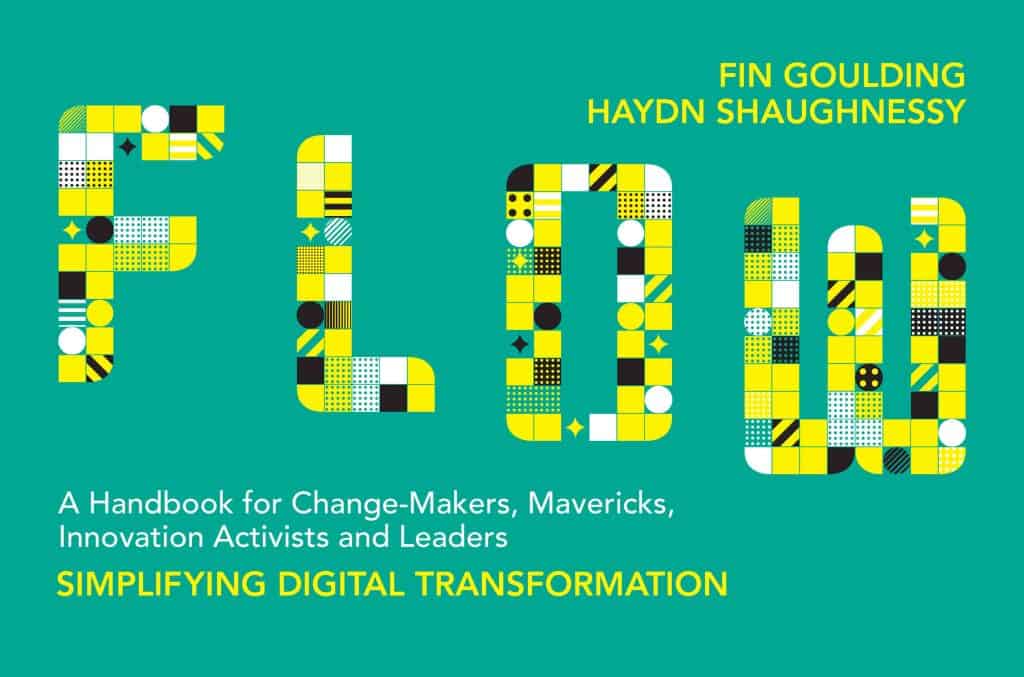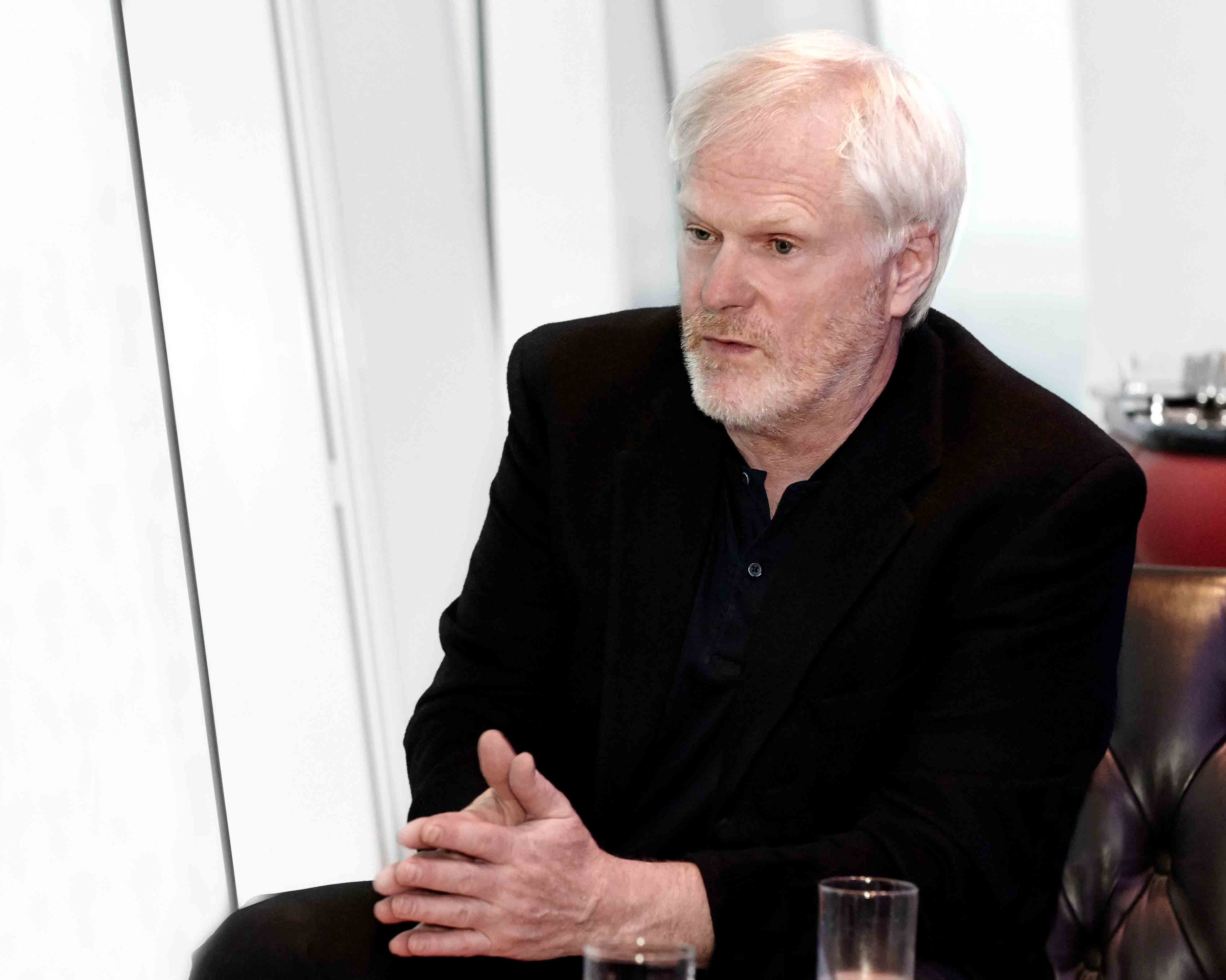Haydn Shaughnessy
The only constant in business is change. Haydn Shaughnessy is co-author of Flow, a handbook designed to simplify digital transformation for business leaders.
Digital transformation is on every company’s agenda now – the integration of technology into all facets of the business, which results in changes to all aspects of operations, from processes all the way to your products’ and services’ value for customers.
Transformation experts Haydn Shaughnessy and Fin Goulding have co-authored the handbook, Flow: A Handbook for Change-Makers, Mavericks, Innovation Activists and Leaders, which helps in assisting leaders to combat the unpredictability of the business world with some colourful techniques and some… unpredictability.
Haydn Shaughnessy says his expertise lies in assisting those susceptible to change to adapt and identify threats in operations.
“I work with organisations in different parts of the world – could be London, could be New York – and most of what I do is help them to define threats that are disruptive threats.
“So I don’t do the kind of classical management consulting about who your competitors are; it’s more like – ‘What’s going on in the world that’s going to throw up some surprises and force you to change very quickly?’”
So, what are the elements of the book that bring this to fruition?
Plan with no meetings… and no plans
Fin Goulding, International CIO at Aviva and former CIO at Paddy Power and Lastminute.com, commented that: “Business has become too complex to run against a plan or schedule.”
From the outset, the mentality here seems hell-bent in finding a way to outdo, or at the very least rejuvenate, traditional techniques.
Fin went on to say: “And no meetings, either, or at least as few as possible. What we’ve been doing is unbinding corporate structures and taking people back to what really matters – intelligent, frequent conversations at venues that we call ‘Walls’.”
These ‘Visualisation Walls’ integrate and improve on the ‘Agile’ and ‘Lean’ methodologies that are popular in businesses but fail to address changes on the fly – in processes, decisions and IT design.
“What we’re doing with Visualisation Walls is we’re creating venues where people can create the right way to get things done.
“It’s very much about having it there in front of your eyes so you can see it together – you can have a conversation about it, or an argument about it, a debate about it.”
Monitoring value
‘Agile’ refers to the evolution of requirements through the collaboration of teams and end users. ‘Lean’ is creating better value for customers with fewer resources.
These sound up-to-date and capable of meeting business requirements yet lack the functionality to change on the go or as original ideas wane.
Haydn explains how the origins of these methodologies are sound but lack a full and rounded picture in terms of value creation.
“There’s a difference between the objectives of some of the original goals and the original inspirations for them and how they get implemented,” says Haydn.
“So something like Agile, the original inspiration for that is absolutely spot on, but by the time it gets implemented, it’s a whole load of training courses and a whole load of rules and a whole load of people to enforce the rules, and that’s what’s holding it back.
“But a lot of these things, as well, they don’t actually address the issue of how you create value and how you keep checking on value. What we emphasis in the book, and also on the website, is that you have to have a value-seeking culture.
“So you can be as lean as you want to be, and you can be as agile as you want to be, and you can be doing things according to the rules, but neither of those methodologies tell you that you’re doing good work, that you’re creating value.”
Haydn highlights how to create better processes and generate value.
Business has become too complex to run against a plan or a schedule.
Empowering workers
There are many critical descriptions for the techniques within the book. One of the more telling ones is “high-wire management without a safety net”. This can be attributed to the no-plans-and-no-meetings technique, yet one of the more safe bets that may avoid critique is the idea of empowering workers. Not empowering for the sake of getting it out there, but actual empowerment.
“I think it means there has to be more leaders. What you tend to hear when you hear managers talk about empowerment, very often it is just language. So we use the term ‘negative empowerment’ – so you tell people you’re going to empower them and then everything in your system stops them actually being empowered.
“They have to go and ask permission too many times or they don’t have the budget – it’s counterproductive. If you’re really going to empower people you’ve got to let those people decide what’s the best way to get work done.”
This is almost a micromanager approach but you’re managing yourself to properly follow through on how work will be done the most efficiently while bypassing barriers.
In essence the book looks to overcome management jargon and put this jargon into real-world practice for workers to do the best job possible to the best of their abilities.

Flow: A Handbook for Change-Makers, Mavericks, Innovation Activists and Leaders
Reducing cycle time
‘Cycle time’ is the time taken to complete a piece of work. Flow techniques and practices look to reduce a task to two days maximum (from the average three weeks to 100 days).
It captures the needs of customers and brings people together more frequently to get an actual understanding of work in progress. Here, discussions of user feedback take place, creating faster interaction.
“One of the things that you’d notice if you worked in any large organisation, it could even be medium-sized organisation, if you think of cycle time as the amount of time it takes to complete a task, very often that’s somewhat left to the culture of the organisation.
“As an example, I did a session with a group – we took two hours to plan a project. That was planning three projects in two hours. And when the team leader said, ‘Okay, I’ll write that up now’, what that means, when he goes away to write it up, it’s not going to come back for three weeks.
“But we’ve actually done it in two hours and all you have to do is take a photograph of it. And that’s one of the things we found in Flow – quite quickly, people realise you don’t have to write reports – just take photographs.”
If companies are willing to incorporate this simple step into planning, it would speed up the delivery and cycle time of tasks. According to Haydn, this is predominantly a cultural aspect and a mindset. The capabilities are already in place; they just have to be implemented.
“I think some are [delivering these objectives successfully], but it’s very early days. Most organisations have spent a fortune on trying to educate people into the Agile methodology, which is 15/20 years old now.
“People are still going on these training courses and learning how to be very disciplined and I don’t think that’s appropriate. So I think that they’re trying but they’re not really doing what they need to do.
“I don’t think you empower people through Agile or you don’t empower people through Lean – if the goal is to empower people, you have to come back to – you empower people to get the work done the best way they can design it, really.”
Haydn Shaughnessy is the co-author of ‘Flow: A Handbook for Change-Makers, Mavericks, Innovation Activists and Leaders’, and is a leading authority on platforms, ecosystems and economic disruption. He is a former Forbes.com columnist on innovation, former editor of “Innovation Management” and has written ‘Shift: A Leader’s Guide to the Platform Economy’. He researches and speaks on how firms can develop better strategies and better ways to work. Haydn speaks about disruption and innovation in the platform era and how to get digital transformation right.
This article was featured in our Q1 Review 2018 magazine. Subscribe to Business & Finance to get full access to our archive.





